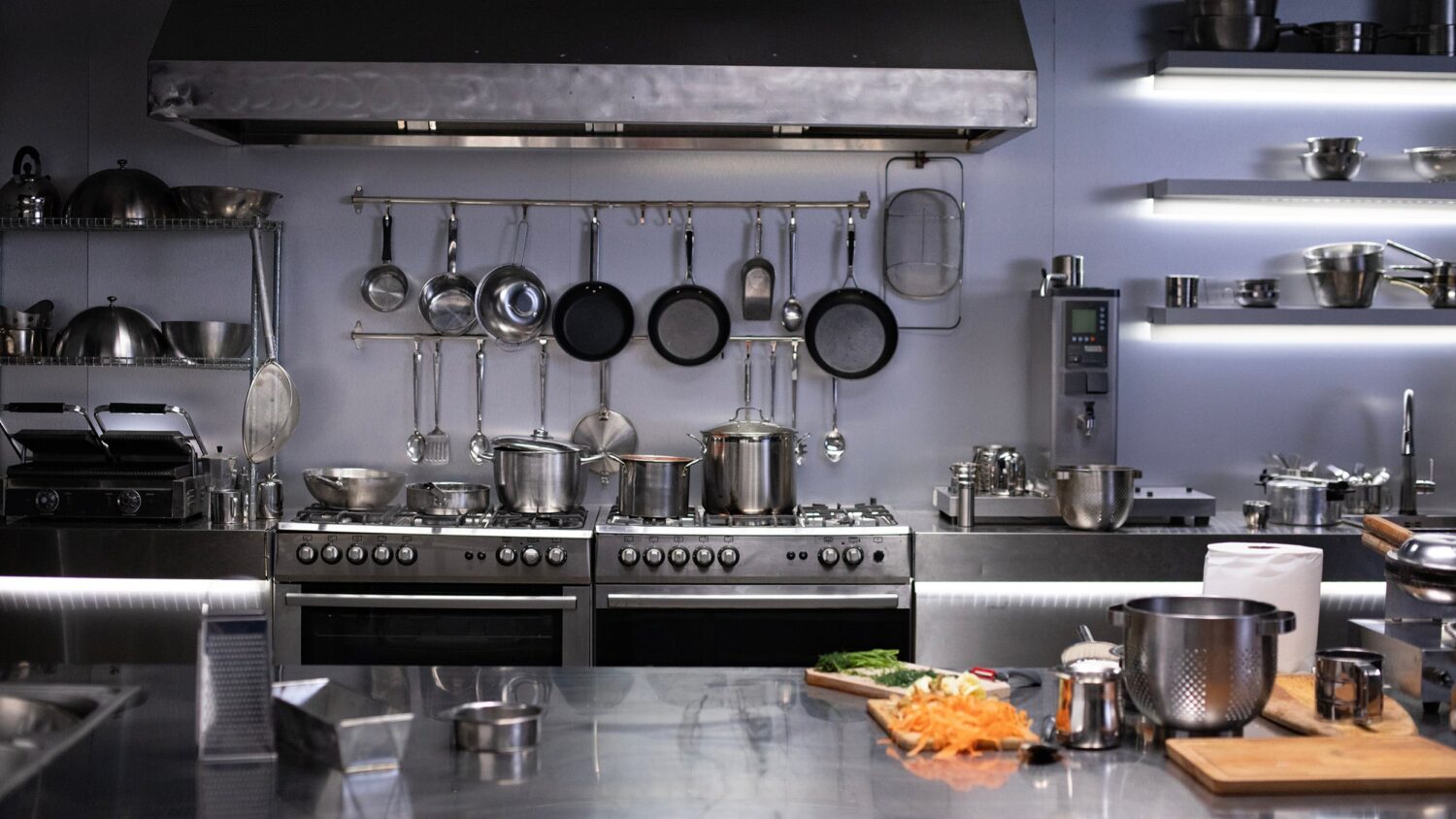Efficient kitchens are the backbone of successful high-volume foodservice operations. Whether you're managing a multi-unit restaurant group, a high-capacity hospital kitchen, a university dining facility, or a resort kitchen serving hundreds of covers daily, the ability to produce high-quality meals consistently and quickly is crucial. This guide breaks down proven strategies, tools, and systems to streamline operations, reduce costs, and improve service in busy, large-scale kitchens.
Why Kitchen Efficiency Matters
In high-capacity kitchens, even small inefficiencies are magnified. A delay in prep, a service bottleneck, or labor hours lost to manual scrubbing all impact revenue, quality, and team morale. Workflow optimization enhances profitability, boosts customer satisfaction, and improves team performance.
Key Benefits of Restaurant Operational Efficiency:
- Faster service and turnaround times
- Reduced overtime and labor costs
- Higher consistency in meal quality
- Stronger team communication and morale
- Cleaner equipment with less labor-intensive scrubbing thanks to tools like the FOG Tank
Smarter Labor and Kitchen Management
Effective kitchen management blends predictive data with executional discipline.
Key Strategies:
- Use POS-integrated scheduling tools (e.g., 7shifts, Restaurant365) to forecast staffing by daypart
- Align BOH labor with prep and service peaks
- Run daily line checks
- Review weekly dashboards tracking COGS, labor ratio, ticket times, and waste
Organizations like Compass Group and Aramark regularly conduct structured BOH evaluations to fine-tune labor and prep coordination.
Designing a Layout That Eliminates Movement Waste
The most efficient kitchen layouts support seamless transitions from receiving to plating.
Assembly Line Advantage:
- Minimizes cross-traffic and touchpoints
- Enables task parallelization and consistency
- Supports high output
Optimized Layout Tactics:
- Position cold storage near prep stations
- Enforce unidirectional flow from cook to plate to clean
- Use visual zoning to separate stations and reduce accidents
According to LeanPath, facilities that design kitchens with visual zoning and reduced overlap cut food waste by up to 15%.
Diagnosing Workflow Bottlenecks
Before redesigning processes, identify where inefficiencies occur.
Assessment Methods:
- Conduct time-motion studies during peak hours
- Map workflows with input from station leads
- Use daily service debriefs to track slowdowns
Tactical Fixes:
- Cross-train staff to flex into lagging stations
- Install Kitchen Display Systems (KDS) or use headsets to coordinate expediting
- Standardize recipes and conduct pre-shift huddles to prevent confusion
Batch Prep and Advanced Production Techniques
Reducing prep time in institutional kitchens starts with smart, scalable systems.
Time-Saving Prep Techniques:
- Use sous-vide proteins to control doneness and reduce cook times
- Pre-portion soups, sauces, and vegetables for line efficiency
- Utilize cook-chill and batch production during off-peak hours to reduce labor stress
Technomic reports that sous-vide systems can reduce ticket times by up to 30% without compromising quality.
Centralized commissary kitchens are commonly used in healthcare and university programs to batch core items and restaurant efficiency and consistency across locations.
Menu Design for Scale and Restaurant Kitchen Efficiency
Your menu should work for your team—not against them.
Menu Engineering Tips:
- Trim low-margin or prep-heavy items
- Cross-utilize ingredients across dishes to limit spoilage
- Design for batch-prep compatibility
Panera and CAVA use menu-level data quarterly to optimize labor, food costs, and consumer demand.
Training to Unlock Staff Efficiency
Even the best equipment requires knowledgeable staff to deliver ROI.
Top Training Platforms:
- Culinary Edge: Custom systems training for chains
- ServSuccess (NRAEF): Credentialing for BOH leaders
- Typsy and ExpandShare: Bite-sized culinary and sanitation modules
Proven Tactics:
- Cross-train to build flexibility
- Conduct shift-based drills for speed and safety
- Use visual SOPs and tiered onboarding for consistency
Sodexo and Compass Group link training programs directly to KPIs, improving retention and performance across distributed teams.
Tools That Save Time and Reduce Friction
Digital Solutions:
- 7shifts and HotSchedules: Labor planning
- Jolt and MeazureUp: Digital task checklists
- Toast KDS and QSR Automations: Order coordination
- Galley and Prep Sheets Pro: Prep forecasting and task tracking
According to Toast, restaurants using digital task systems report a 12-20% reduction in idle time.
Inventory and Supply Chain Optimization
Inventory Management Tools:
- MarketMan, BlueCart, and Restaurant365 automate ordering and monitor usage
- Weekly cycle counts highlight spoilage, theft, or portion issues
- Integrated POS links actual vs. theoretical usage to food cost tracking
Supply Chain Enhancers:
- Cloud-based ordering consolidates bulk buying
- Auto-generated orders enforce par levels and prevent overstock
- Toast reports that integrated tools reduce order errors by 75% and cut food cost variance by over 3%
Equipment That Pays Off
Cleaning Tools That Reduce Labor:
- FOG Tank: Heated soak tank cleans kitchen equipment in ten mins to eight hours depending on how dirty the item, without scrubbing
- GrimeGo: Eco-friendly degreaser
- Tiger Carbon Remover: Eliminates fat, oil grease and baked-on carbon from pans and trays
Operators using FOG Tank systems report faster turnaround, fewer injuries, and reduced labor hours spent on cleaning.
Final Thoughts: Build Systems, Not Workarounds
The most common mistake? Treating the kitchen like a static system.
Operators who don't regularly audit kitchen flow, labor deployment, and equipment ROI fall behind quickly. The key to sustainable efficiency is building adaptive systems—processes, tools, and training that evolve with your business.
Start with these foundational elements:
- Smart layouts that reduce motion waste
- Forecast-driven labor and prep planning
- Tech-enabled training and task tracking
- Menu strategies that scale
- Tools that automate your worst labor drains
In high-volume foodservice, marginal gains become exponential over time. Looking for ways to improve restaurant efficiency isn't about cutting corners—it's about working smarter, reducing chaos, and delivering quality at scale.
